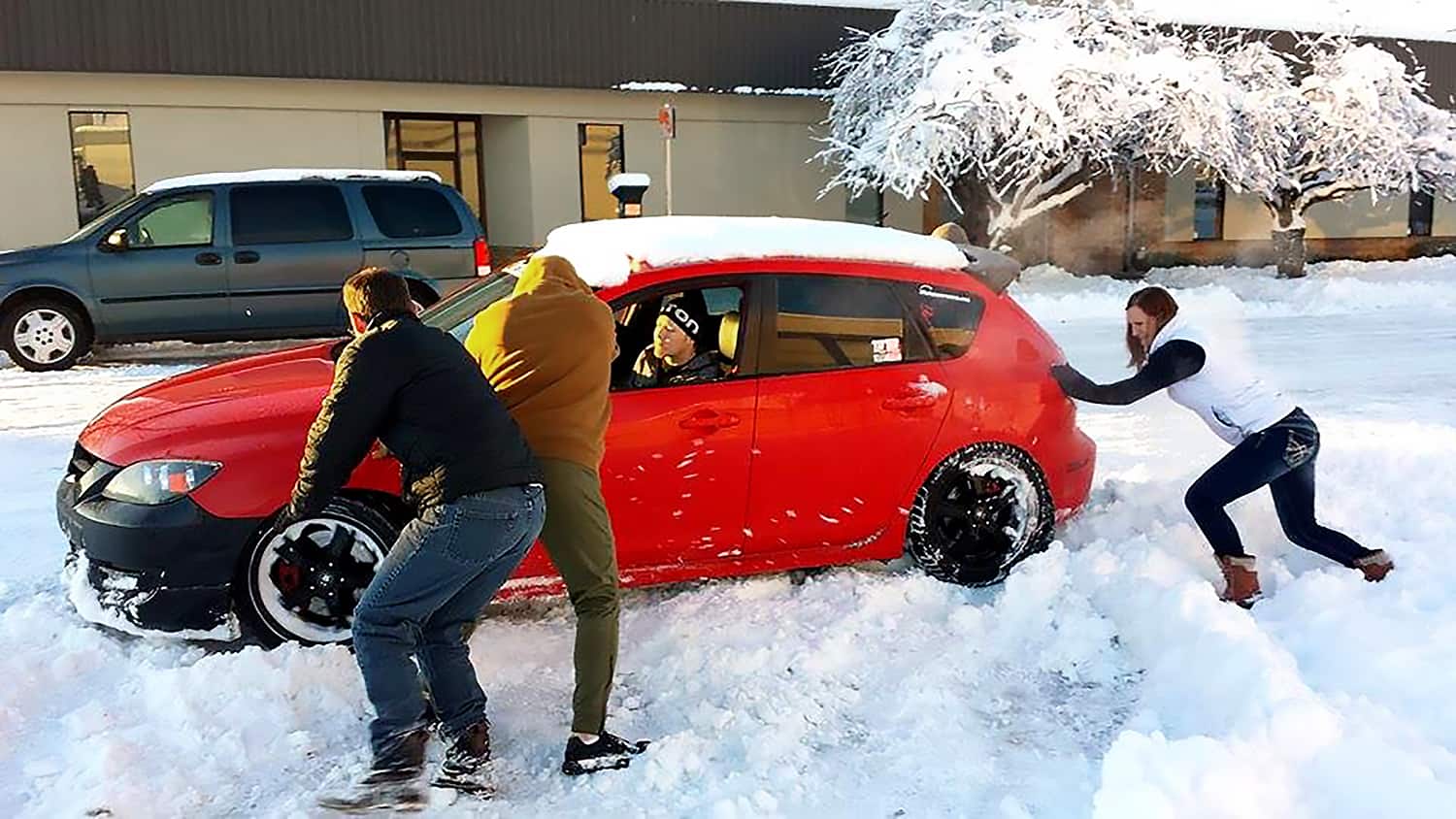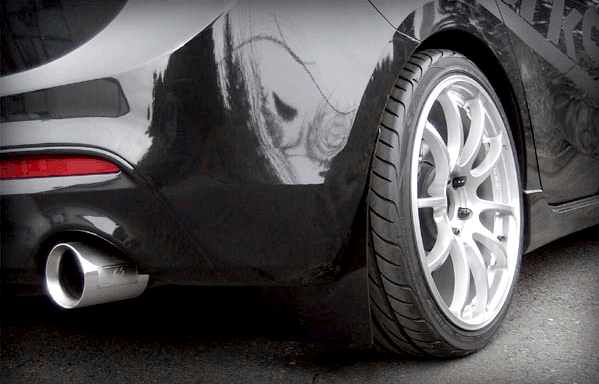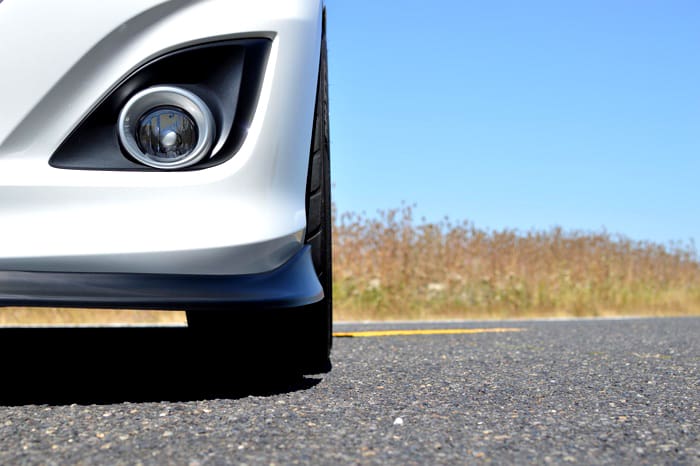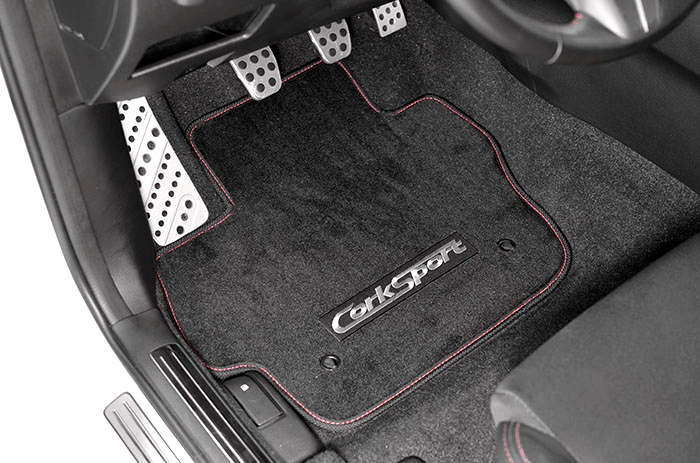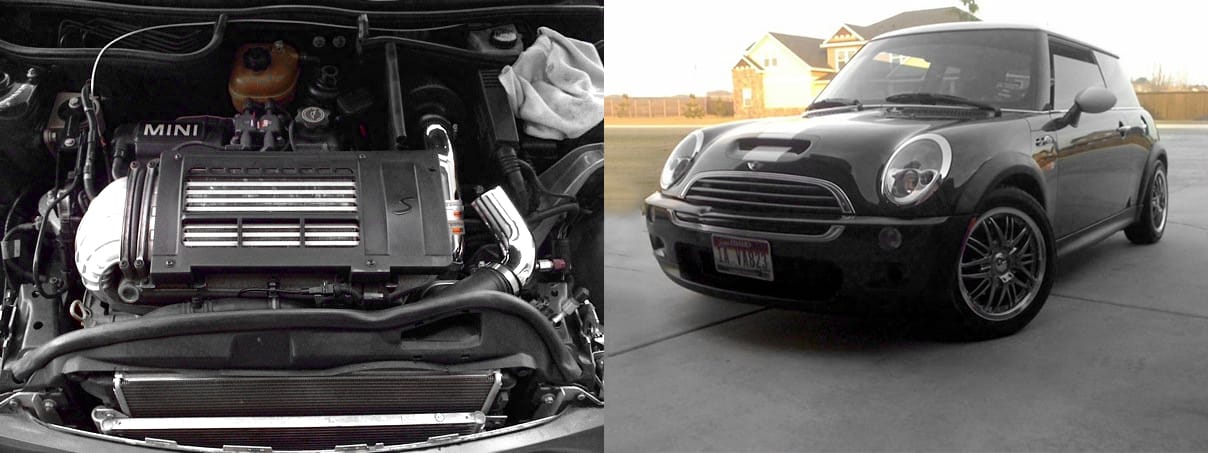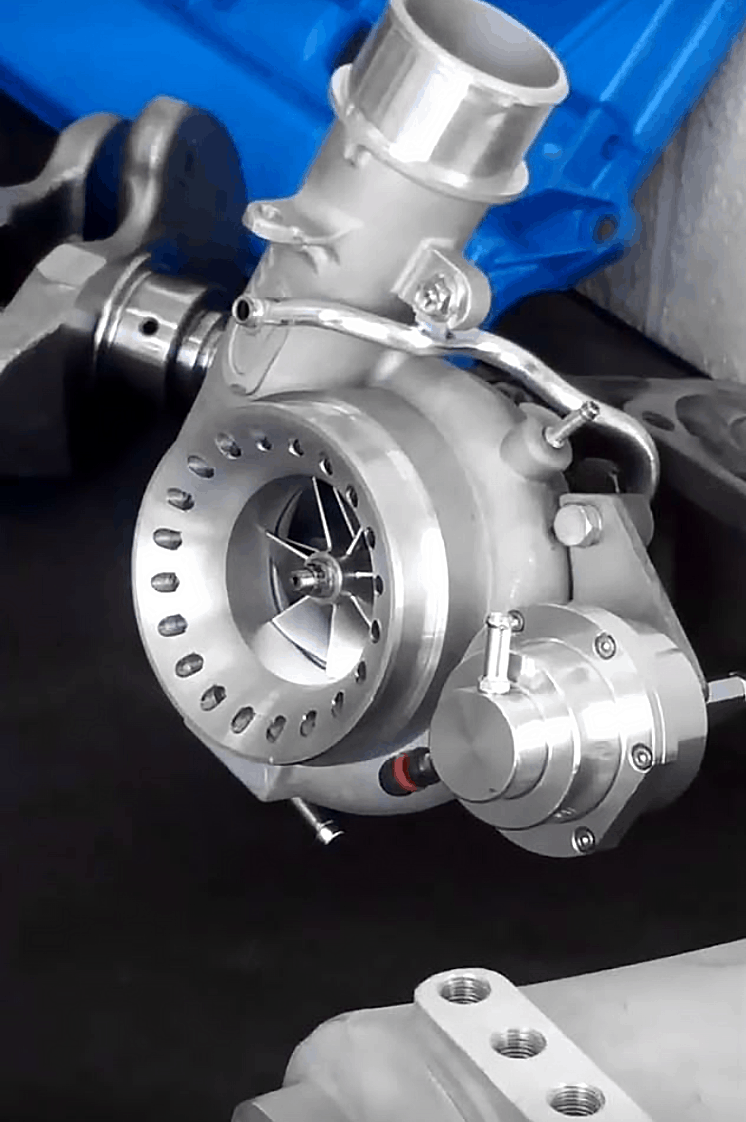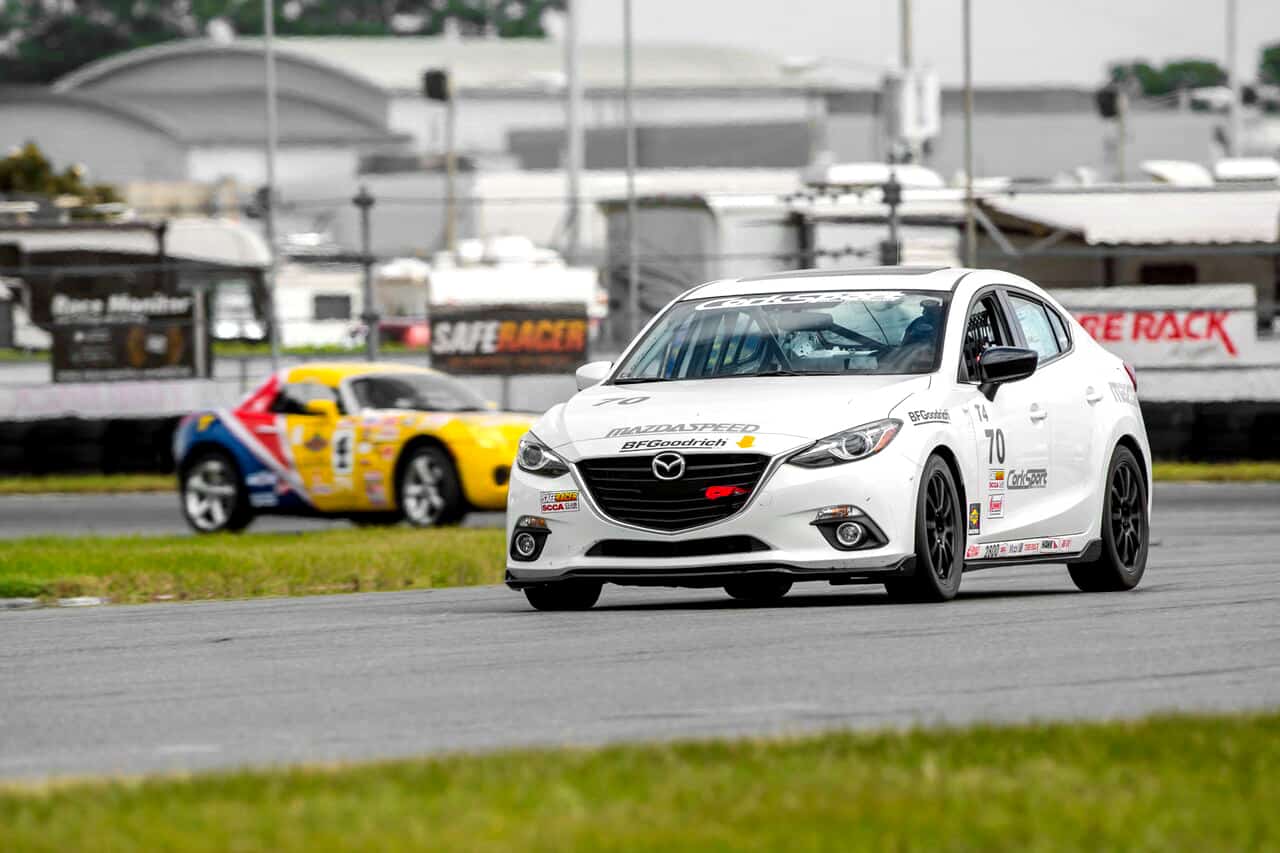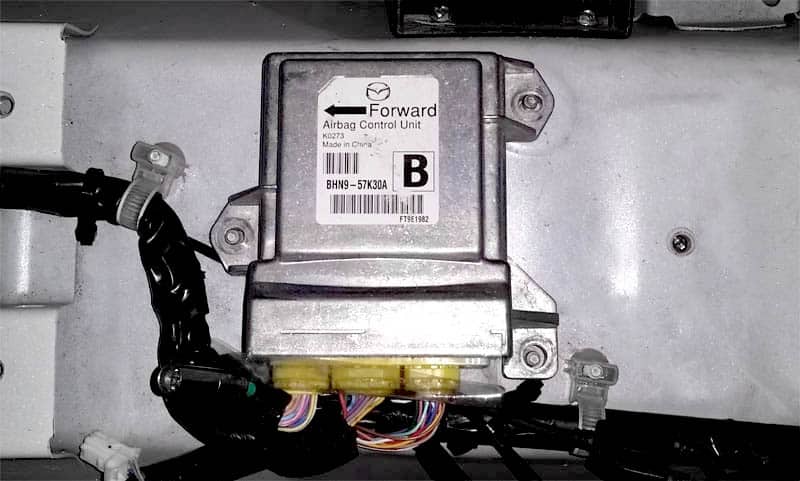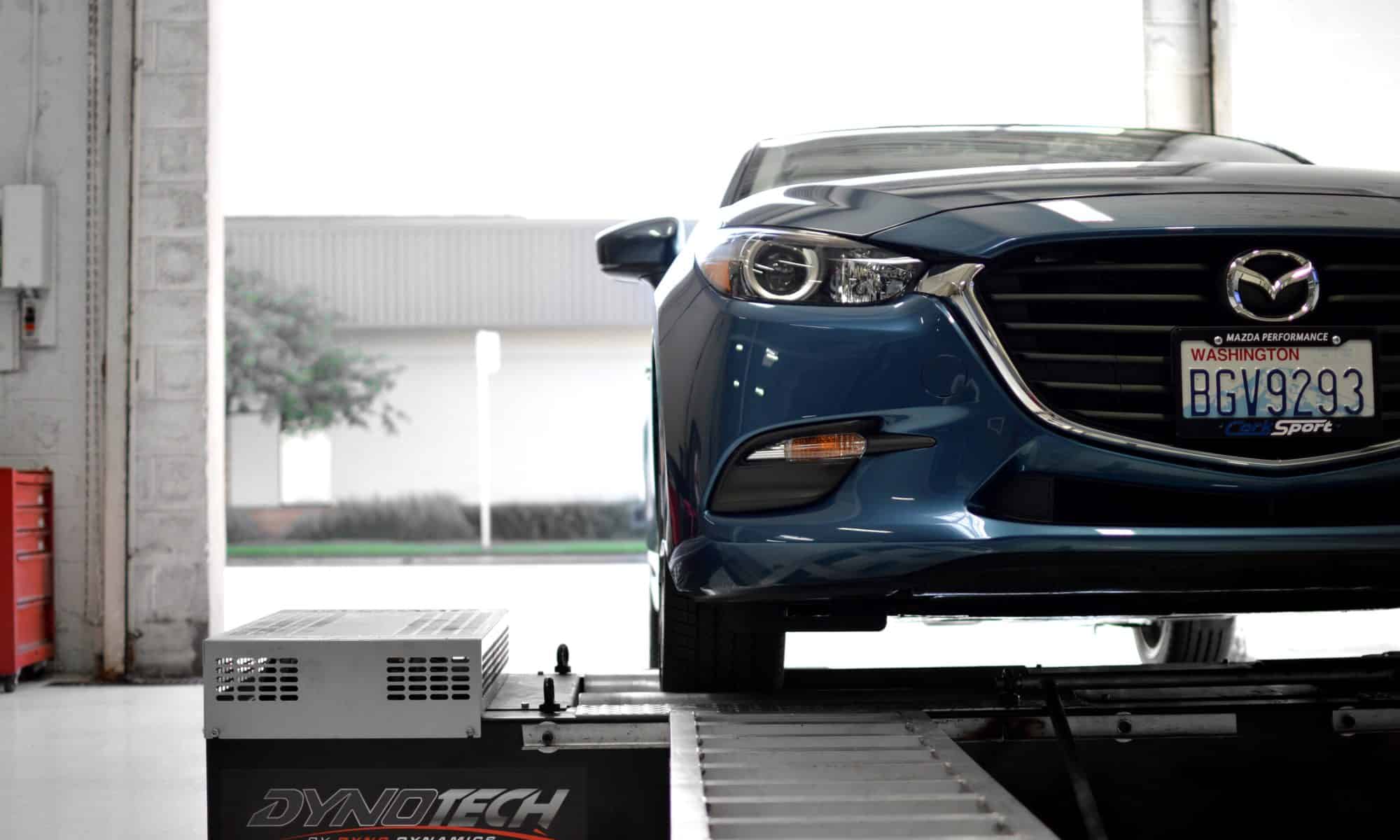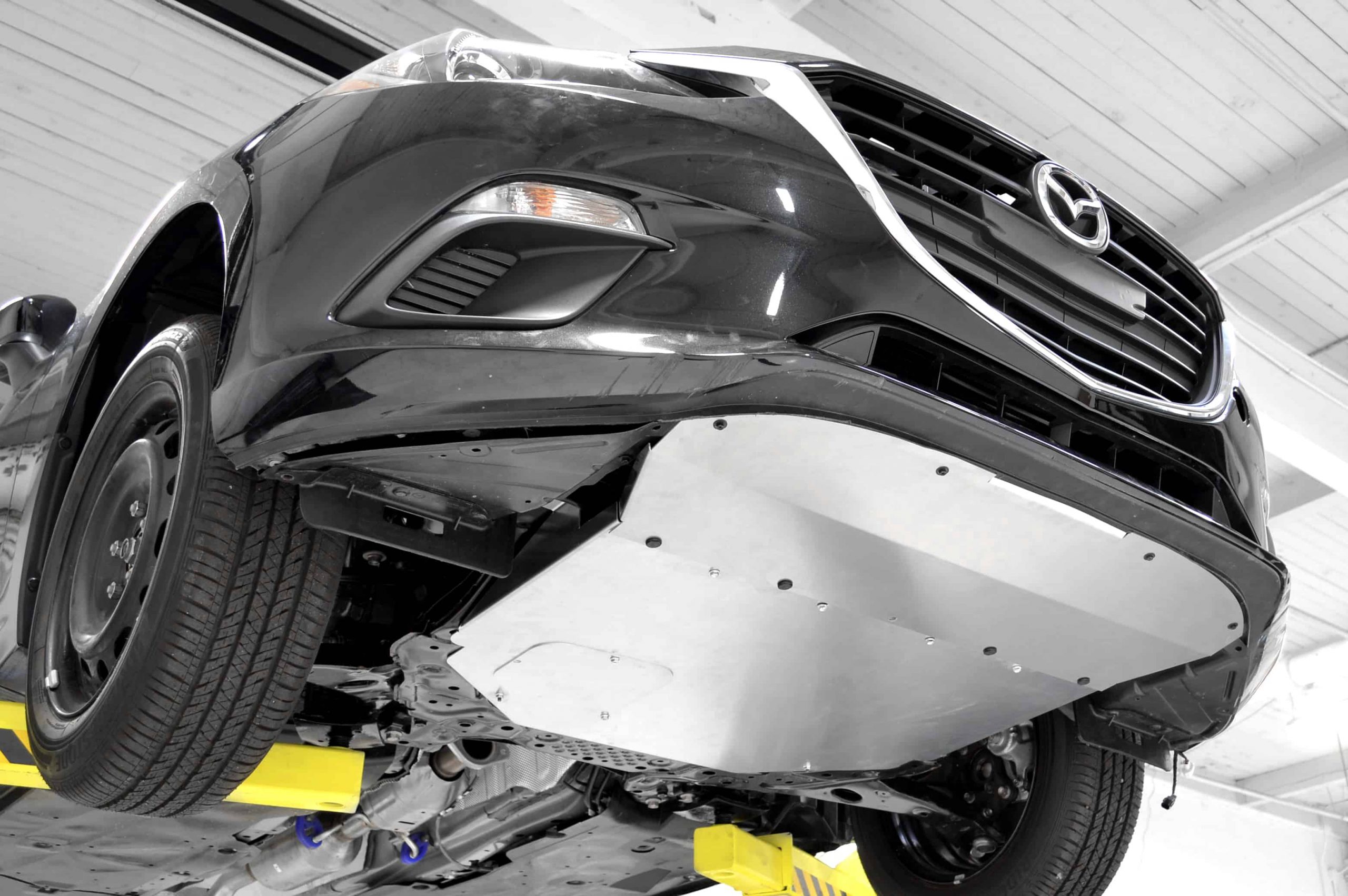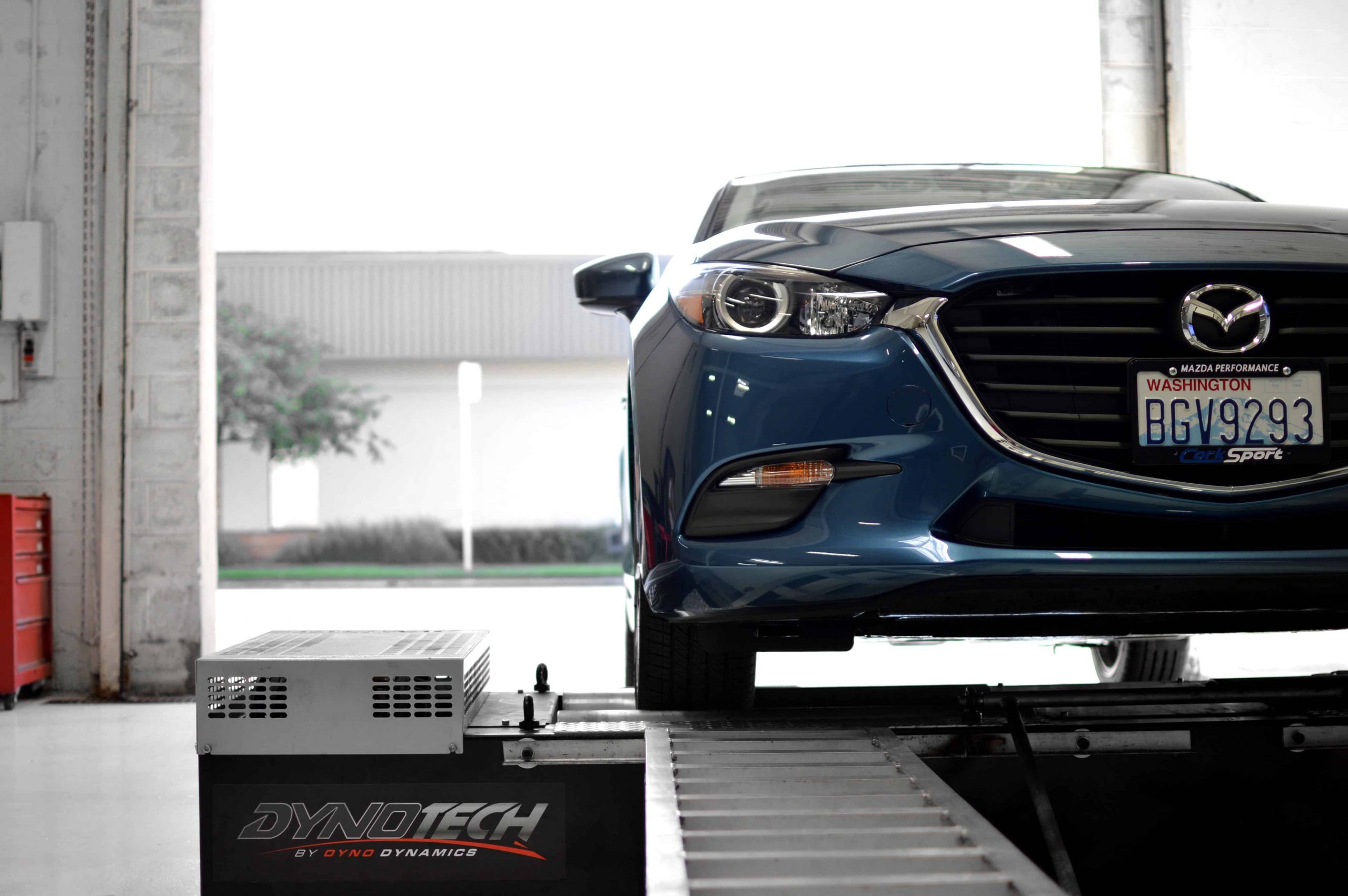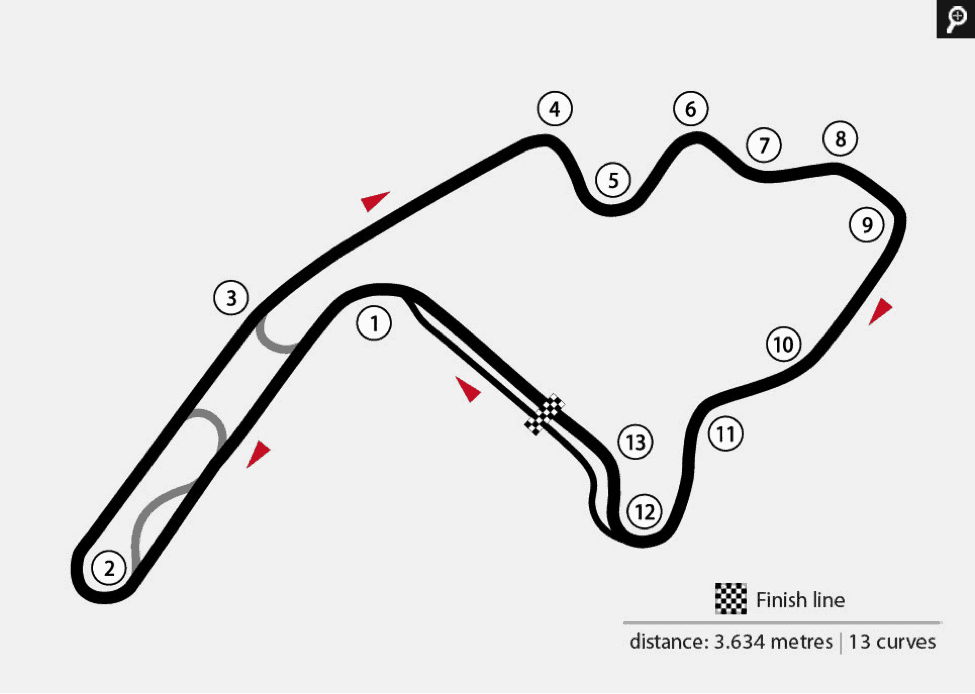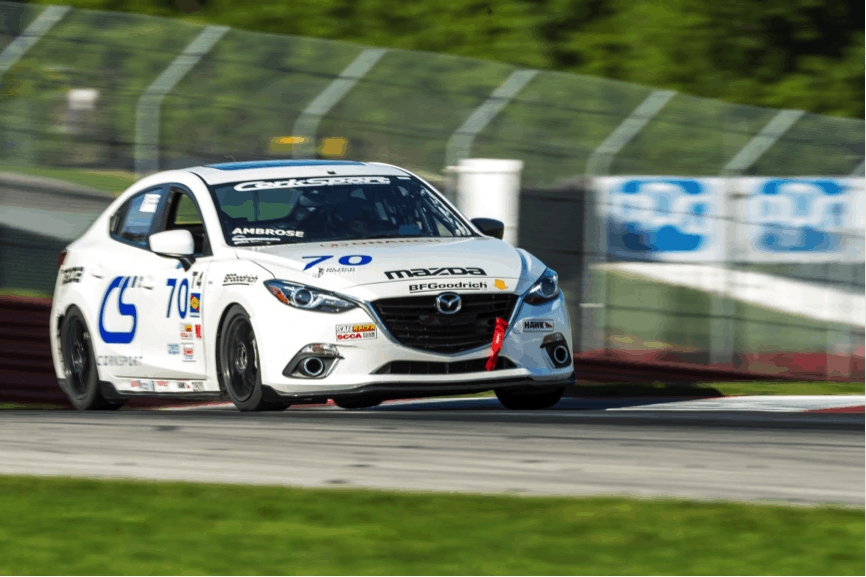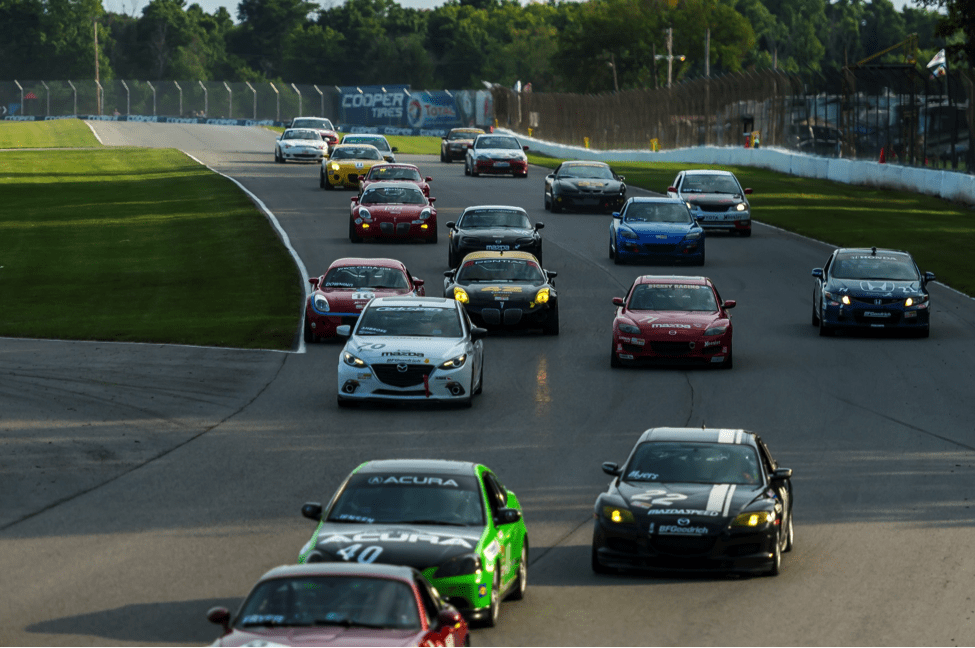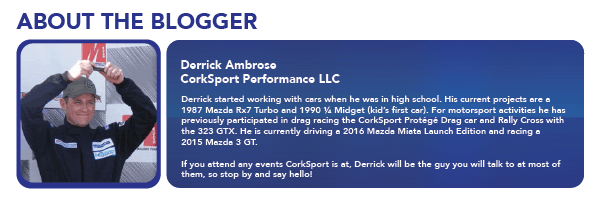Dear Car Guy,
It’s beginning to look a lot like WINTER, and for those of us who aren’t so lucky to have a daily driver, it’s time to start to winterize our Mazdas.
If you’re not one of those who put their Mazda baby to sleep for the long winter months, check out the tips below to best prepare for winter driving, and keeping yourself safe!
CHECK YOUR TIRES!
• Consider getting snow tires. If you live in an area that gets a lot of snow, swap out your regular tires for all-season tires or snow tires. Seems obvious, but snow tires have a softer rubber that allows them to retain flexibility in the coldest of weather. They also have specifically-designed tread pattern for gripping in ice and snow. They aren’t guaranteed to keep you from slipping and sliding in your car, but they help with better traction. (In winter, any extra help to keep us from losing control of our Mazdas)
• Check the tire pressure. If you’re not opting for winter tires, check your tires often and keep them properly inflated, however this is needed for all tire types. Cold weather changes the air pressure in your tires and causes it to drop (No, it’s not the local kids deflating your tires… I’ve fallen for that one before). Remember that properly inflated tires keep better contact with the road, and while you can’t always keep from slipping, you can do your best to have more connection to the pavement.
• Check the security of your mudflaps. Mudflaps can help keep road debris from killing your paint, be sure yours are securely installed on your ride for maximum protection. If you don’t have them yet, we can hook you up with a fresh set of mudflaps here.
CHECK YOUR FLUIDS AND ENGINE!
• Fill your wiper fluid and change out your blades. Remember that seeing the road is a requirement to staying on it! An ample supply of wiper fluid and new blades will give you a good line of sight in those nasty winter storms. Be sure to use the wiper fluid that has a lower freezing temperature. Otherwise, you’ll be trying to clear your windshield and failing.
• Get an oil change. For your Mazda’s engine to run, it needs the correct oil lubrication. Unfortunately, colder temperatures reduce the effectiveness of the oil. The colder it is outside, the thicker the oil gets. Thickened oil has trouble circulating through your engine, which means your engine doesn’t get appropriately lubricated during startup. Check the owner’s manual to see what oil is currently used in your Mazda, as well as, the recommended viscosity (thickness of the oil) level for different climates.
• Check your anti-freeze mixture. The ratio of your water to anti-freeze mixture should be 50:50 to prevent your radiator coolant from freezing. If you’re unsure, your local auto parts store should have a relatively cheap anti-freeze tester.
• Check your belts and hoses. Colder temperatures potentially weaken the belts and hoses. Look for signs of wear, and replace if needed. In the scenario that a belt snaps while you’re driving, you’ll have to wait for a tow truck, or that trusted buddy to get you out of the cold.
PROTECT YOUR CAR!
• Remove vulnerable exterior mods. Exterior modifications like front lips, custom wheels, and any other exterior bolt-ons that you cherish should be removed. The elements will take their toll on your car, even if it’s parked in the garage at night. From salt on the roads to new potholes you can’t see in the rain, keeping these beloved mods in the garage for the season will preserve your investment.
• Install floor mats. If you don’t already have floor mats in your ride, putting them in the front and back of the car will help keep your interior carpet pristine. Floor mats are easier to clean and can be removed to wash if the mud or snow gets too intense. Click here to check out our CS floor mats.
• Secure your Seat Covers. If you don’t have them, winter is the best time to use them! If you do, make sure that you have them securely installed. The wet from rain and snow isn’t great for the interior and seats. They’re also great for protecting your back and passenger seats from corners of boxes or crockpots of chili while carting presents and food from place to place.
PROTECT YOURSELF!
• Stock your car with emergency supplies. This is one that my dad never let me leave home without. Snacks, blankets, towels, waters, and emergency/first aid kit should be in your trunk during the winter seasons (if it’s not always in there). You never know where or when you might get stranded during winter, and if it’s for longer than expected being prepared is key! Also, the towel is great for kids, passengers, and pets who might be a little muddy or wet from the weather.
Note here from CorkSport: Keeping spare cash in your emergency kit can often help if you’re financially strapped and need to pay for a tow. It could save your butt one day (I know it has saved mine in emergencies!).
• Check your emergency supplies. Road flares, jumper cables, and first aid supplies should be checked for expiration and usability. Road flares do not always have expiration dates. However, the summer months with high heat can sometimes render them unusable (storage above 120 degrees for longer than a week should be avoided), as well as they could be expired if you got your kit for Christmas from Grandma a few years ago.
Whether you’re driving a Mazdaspeed 3, Mazdaspeed 6, or you’re riding around in a Mazda 3 or Mazda 6, we hope that you use our tips to keep yourself safer this winter!
We also sincerely hope that you’re not trying to weather any storms in a Miata or MX5… our Mazda enthusiasts are awesome, but that’s just a different level of crazy!
Anyone else have some good tips or tricks for winter driving in your Mazda or Mazdaspeed?
Share your thoughts or tips in the comments; I am sure we could all use them!
Wishing you safety, warmth, and clear weather this winter!
Cheers,
Kim@CorkSport


